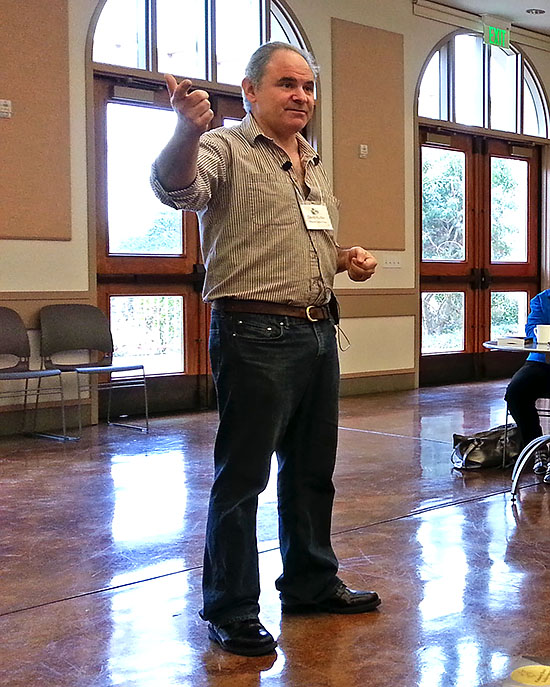by Joseph T. Sinclair
The predominant angle for photography is, guess what? It’s the human-point-of-view angle. It’s the angle of a person standing up taking a photo.
People take most photos from this very human point of view or angle. Consequently, to take an unusual photograph or even a dramatic one, you can simply change the angle of your shot. Instead of shooting from eye level, you can try many different angles.

First, try shooting a photo from an angle higher than eye level. To do so you obviously need to get into a position higher than the subject. You can use a ladder, stairs, a balcony, the top of a vehicle, or even stand on a chair. These days people are even flying drones to take aerial photos easily and inexpensively.

Second, try taking a low angle shot. You can do so from a sitting, squatting, or kneeling position where you can look directly at or up to the subject. These shots enable you to get more of the foreground into the photo which tends to give photos a dramatic effect.

Third, take an extreme low angle photo. To do so you have to lie on the ground. That means getting your phone camera close to the soil or the floor. You can get some very dramatic effects in doing so.

Fourth, try taking macro shots. Many phone cameras have excellent macro capability; that is, you can take good sharp close-ups. Taking close-ups is a lot of work. It usually requires you to get in an unusual position – often an uncomfortable position – in order to get a good close-up shot. Nonetheless, close-up photos can be very dramatic.

Fifth, taking frontal shots can sometimes be dramatic, but typically frontal shops do not generate as much interest as shots from a different angle; that is, from one side or the other. Thus, taking a photo of a building from the left or from the right gives it more of a 3‑D effect and is usually more interesting than taking the same photo from the absolute front and center. Buildings, of course, are the obvious example. But taking shots from an angle to the right or the left have the effect of making your photos more interesting in many situations.


Sixth, when taking pictures of children, it is often more interesting to take them from their level rather than yours. That means squatting kneeling or sitting on the ground. The same goes for small animals and other small subjects.

Seventh, finally, you always have your choice of taking a close-in or a far-out shot. For instance, at a concert you can take a close-up shot near the stage and emphasize the action of the performers. Or you can take a far-back shot away from the stage showing the audience, a shot which tells a different story. You can also switch orientations from the usual horizontal to the less common vertical.


Changing the angle of your shooting is a good way to get unusual shots and in many situations more dramatic shots. It’s easy to do and simply requires remembering to do it. Experiment with it, and see if you can improve your photography.
